It all started when I saw a post on Facebook by the Cake Duchess. She was announcing the Twelve Loaves challenge for October. The seed had been planted… and, not being one to pass up an opportunity to bake bread, I took up the challenge.
The Twelve Loaves’ theme for this month is seeds and nuts and grains.
I decided to make my loaves with three Ss: Semolina, Spelt and Sesame seeds. Spelt is one of the super grains so I’ve been using it a lot lately. I love breads made with semolina and sesame seeds so I thought these would pair really well with Spelt.
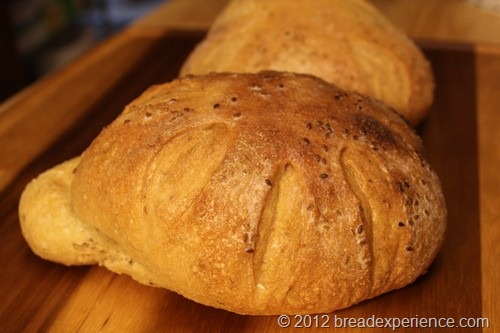
The inspiration for these Semolina Spelt Sesame Seed Loaves came from one of my favorite breads, Pane Siciliano.
However, I made a few substitutions. I used an overnight poolish of white Spelt flour instead of regular all-purpose or bread flour and for the dough, I used a mixture of Semolina and Spelt flour rather than Durum flour.
These substitutions changed the texture and extensibility of the dough so instead of shaping the loaves in the traditional S-shape, I shaped my loaves into round boules. I decided to experiment even further by scoring the loaves in a different pattern.
And this my friends is where the metamorphosis began…
Into the oven went these beautiful round Semolina Spelt Boules …
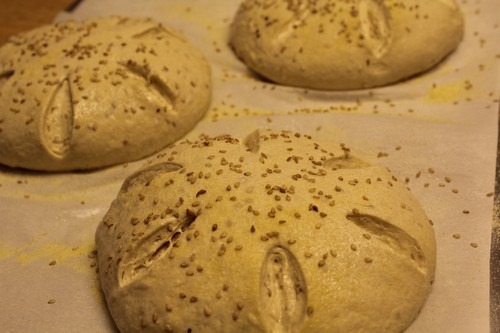
… and out came this cute little turtle. I wish I could say I planned it that way, but he just poked his head out of his shell during the baking cycle.
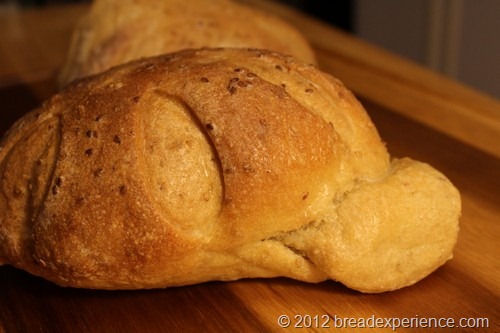
Semolina Spelt Sesame Seed Loaves
Makes: 3 Medium Loaves
Adapted from: The Fundamental Techniques of Classic Bread Baking by the French Culinary Institute
These Semolina, Spelt Sesame Seed Loaves, made with an overnight spelt poolish, feature sesame seeds in the dough and on the crust.
Ingredients:
Poolish:
- 260 grams (9 1/8 ounces) white Spelt flour
- 260 grams (9 1/8 ounces) water
- 1/2 teaspoon active dry yeast
Final Dough:
- 400 grams (~14 ounces) Semolina flour, more for sprinkling on baking sheet and on top of loaf, if desired
- 313 grams (~11 ounces) white Spelt flour, plus extra for dusting
- 425 grams (15 ounces) water
- Poolish (all of the above)
- 19 grams (2/3 ounce) Kosher salt
- 1/4 teaspoon active dry yeast
- 19 grams (2/3 ounce) toasted sesame seeds
- Additional sesame seeds for sprinkling on top, if desired
Directions:
1) Making the Poolish
Mix the Spelt, water and active dry yeast in a mixing bowl. Stir well using a wooden spoon. Cover the bowl with plastic wrap and set aside to ferment at 75 degrees F. for 12 to 14 hours.
The poolish was active and bubbly after 10.5 hours so I proceeded with the rest of the process at this point.
2) Mixing the Dough
Combine the semolina and Spelt flours with the water and poolish in the bowl of a stand mixer. Using the dough hook, mix on 1st speed until the dough is thoroughly mixed. Let the dough autolyse for 15 minutes.
Add the salt and yeast and mix on 1st speed for 5 minutes. Increase to 2nd speed and mix until the dough comes together, but remains slightly sticky.
When the gluten has developed sufficiently, add the sesame seeds and mix on low speed until thoroughly incorporated.
3) Bulk Fermentation
Place the dough into a clean, oiled, large bowl. Cover the bowl with plastic wrap and set it aside to ferment for 1 hour. Uncover the dough, fold it and place it back in the bowl. Recover with plastic wrap and set it aside again to ferment for an additional hour.
4) Shaping the Loaves
Remove the dough from the bowl onto a work surface lightly floured with Spelt. Divide the dough into 3 equal pieces, about 415 grams each. Let the dough balls rest for 15 minutes.
5) Proofing the Loaves
Place a piece of parchment paper on a baking sheet and sprinkle it with semolina flour. Shape the balls into tight boules by stretching the dough around to the bottom on all sides, rotating the ball as you go. Place the boules on the parchment-lined baking sheet and cover the boules with plastic wrap. Let them proof for 1 hour.
6) Preheat the oven. Thirty minutes before you are ready to bake the loaves, preheat the oven to 450 degrees F., with a baking stone on the middle rack and a steam pan on the bottom rack.
7) Scoring the Loaves
Score the loaves using a serrated knife or lame in the pattern of your choice. As I mentioned earlier, I decided to try something different. It turned out to be an interesting experiment. Although the turtle is cute, next time, I’ll make the slashes a bit longer so the dough rises up instead of out.
8) Baking the Loaves
Transfer the loaves to the preheated baking stone. Add 1 cup of ice to the steam pan and spray the loaves with water. Close the oven door and bake the loaves for 40 minutes, or until the crust is golden brown and the loaves make a hollow sound when thumped on the bottom.
9) Cooling and Serving the Loaves
Cool the loaves completely on a wire rack before slicing and serving.
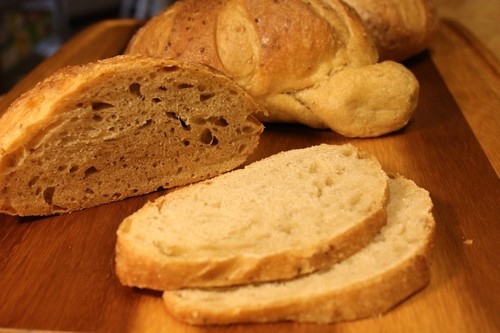
These loaves are really good. The semolina and sesame seeds provide a slightly nutty and crunchy flavor and since Spelt is one of the super grains, it provides extra protein and other nutrients.
Thanks to Lora of Cake Duchess, Jamie of Life’s a Feast, and Barb of Creative Culinary for hosting the Twelve Loaves challenge.

Happy Baking!
Cathy
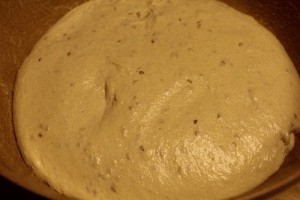
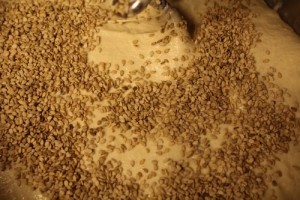
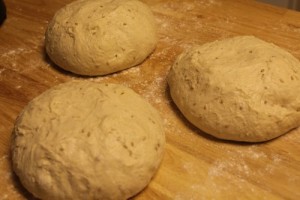
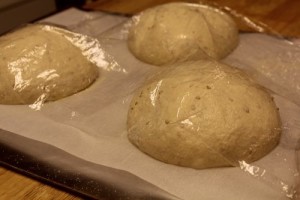
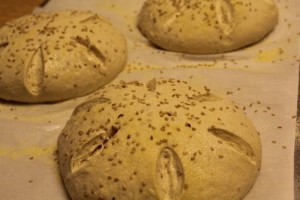
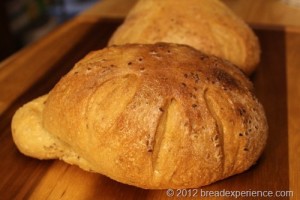
Cake Duchess says
I love that you used semolina, spelt and sesame seeds-that is one delicious and flavorful bread I’d love to sample. How fun that it morphed into turtles-my kids would have been thrilled:)Thanks for baking with 12 Loaves, Cathy:)
Mich - Piece of Cake says
What a gorgeous loaf of bread, and it’s so clever to use 3 S for ingredients…
ilina domain says
Beautiful recipe! I’m wondering, what kind of semolina did you use? Some people use “aata”, which is really just durum wheat flour and has a fine texture. Others use “sooji”, which has that sandy consistency similar to cornmeal (this contains the endosperm of the wheat). Unfortunately some people refer to both as the same, and this causes a lot of confusion for me. I’d greatly appreciate if you could clarify.
Cathy W. says
Hello Ilina, I love the different translations for this flour. The Semolina i used would most likely be considered “sooji” because it has a more sandy consistency. Hope this helps.